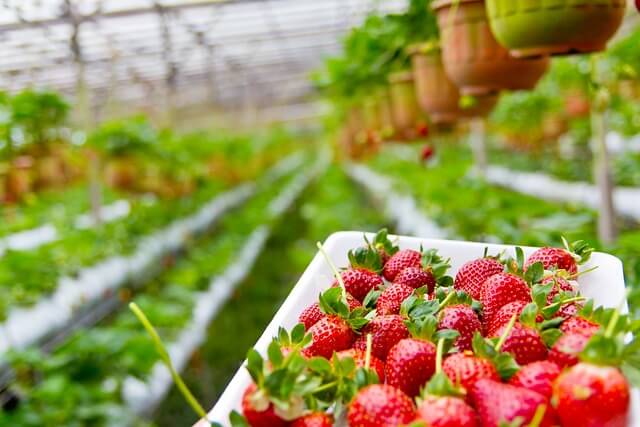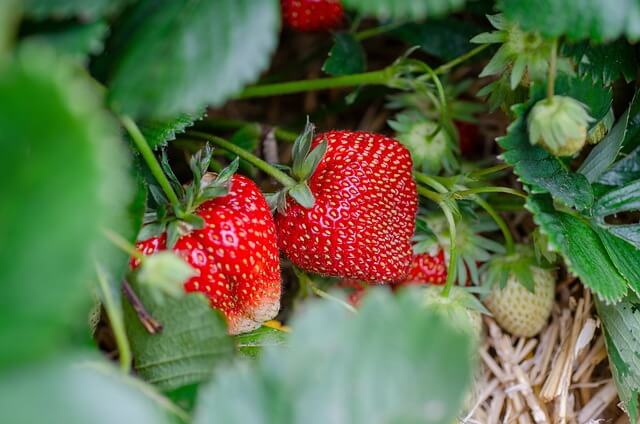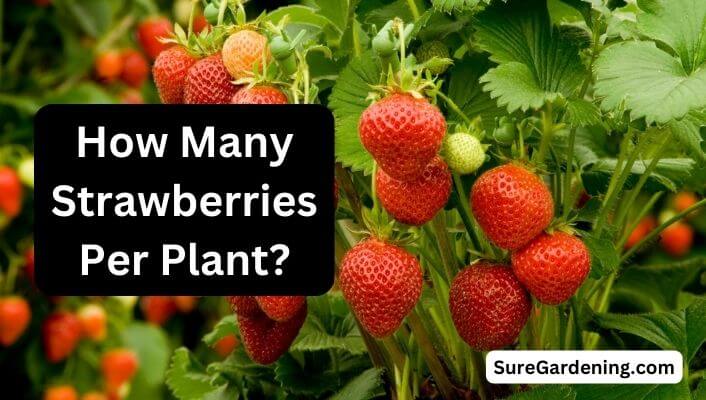Imagine stepping into your garden on a warm summer morning, the sun casting a golden glow on your flourishing strawberry plants. Your heart races with excitement as you reach down and pluck a perfectly grown strawberry, its sweet aroma filling the air.
Whether you’re a seasoned gardener or just beginning your horticulture journey, knowing how many strawberries per plant is essential.
In this article, we provide expert insight, actionable tips, and comprehensive information about strawberry yields to ensure you get the most out of your strawberry plants.
Post Contents
- How Many Strawberries Per Plant? (Answer)
- Factors Influencing Strawberry Yield
- Understanding Different Strawberry Varieties and Their Yields
- Exploring High-Yield Strawberry Varieties
- Tips for Maximizing Strawberry Yield
- The Role of Soil, Sunlight, and Care in Strawberry Production
- Strategies for Increasing Strawberry Harvests
- Overcoming Challenges in Strawberry Yield
- Expert Insights on Optimizing Strawberry Plant Productivity
- Increasing Overall Strawberry Production in Your Garden
- FAQs: Common Questions About Strawberry Yield Answered
- Q: How often do strawberry plants produce fruit?
- Q: Can I increase strawberry yield by planting more plants close together?
- Q: What’s the best time to fertilize strawberry plants for optimal yield?
- Q: Do organic gardening practices affect strawberry yield?
- Q: How do I protect strawberries from pests without using harmful chemicals?
- Conclusion: Empowering Strawberry Growers With Yield Knowledge
- Author
How Many Strawberries Per Plant? (Answer)
So, how many strawberries can you realistically expect from a single plant? On average, a well-tended strawberry plant is capable of yielding about a quart of strawberries per year.
This yield estimation provides a baseline for your expectations, ensuring you’re not caught off guard by a bountiful or modest harvest.
Factors Influencing Strawberry Yield
Before delving into the specifics of strawberry yield per plant, it’s essential to grasp the factors that impact the harvest.
Several elements come into play, including the type of strawberry variety, environmental conditions, soil quality, and cultivation practices. Each of these variables can influence the overall productivity of your strawberry plants.
Understanding Different Strawberry Varieties and Their Yields
Strawberry enthusiasts will know that not all strawberry plants are created equal. Different varieties exhibit varying growth patterns, fruit sizes, and yield potentials.
Varieties like Ozark Beauty, classified as ever-bearers, stand out for their ability to produce two main crops annually, accompanied by scattered berries throughout the year.

When you tally up the harvests, you’ll generally find that these varieties yield around a quart of strawberries in total production.
Exploring High-Yield Strawberry Varieties
When it comes to increasing strawberry yields, high-yield varieties can make a big difference. Varieties such as Fort Laramie and Tribute are known for their exceptional productivity, often outperforming other types in terms of the number of berries produced. By selecting these varieties, you can increase your strawberry harvest significantly.
In order to grow healthy plants, you should choose varieties that are well-suited to your specific environment and soil type. For optimum yields, it’s also crucial to follow proper planting and maintenance practices.
Tips for Maximizing Strawberry Yield
Achieving a bumper strawberry harvest requires more than just selecting the right variety. Strategic cultivation practices play a pivotal role in maximizing yield.
Simple techniques like proper spacing, regular fertilization, and adequate watering can make a substantial difference in the number of strawberries your plants produce.
The Role of Soil, Sunlight, and Care in Strawberry Production
Healthy strawberry plants rely on a trifecta of essential elements: quality soil, optimal sunlight exposure, and attentive care.

Choosing well-draining soil, providing ample sunlight, and following a consistent care routine are key to ensuring your plants reach their yield potential.
Strategies for Increasing Strawberry Harvests
The key to increasing strawberry yield is implementing effective strategies. If you want your strawberry garden to grow robustly and produce more fruit, consider using methods such as companion planting, mulching, and pruning. These strategies can help you tap into its full potential.
In addition, fertilizing your strawberries regularly and providing adequate water can help improve their growth rate. If you follow these steps, your strawberry garden will thrive and be productive.
Overcoming Challenges in Strawberry Yield
Gardening often comes with challenges, and strawberry cultivation is no exception. Pests, diseases, and adverse weather conditions can hamper your strawberry yield.
Learning to identify, prevent, and manage these challenges is crucial for maintaining consistent and impressive harvests.
Expert Insights on Optimizing Strawberry Plant Productivity
To delve deeper into the art of maximizing strawberry yields, we’ve gathered insights from experienced horticulturists and avid strawberry growers.
A wealth of information is available from the collective wisdom of strawberry specialists, ranging from advanced cultivation techniques to practical advice on how to get the most out of your strawberry plants.
Increasing Overall Strawberry Production in Your Garden
The ultimate goal of many strawberry gardeners is not to increase their individual plant yields but to increase their overall strawberry production.
By applying a combination of the strategies, insights, and tips provided in this article, you can create a garden that brims with juicy, succulent strawberries throughout the growing season.
FAQs: Common Questions About Strawberry Yield Answered
Q: How often do strawberry plants produce fruit?
A: Strawberry plants typically produce fruit once or twice a year, depending on the variety.
Q: Can I increase strawberry yield by planting more plants close together?
A: While dense planting can lead to higher yields, it’s crucial to provide adequate spacing to prevent competition for resources.
Q: What’s the best time to fertilize strawberry plants for optimal yield?
A: Fertilize strawberry plants in early spring and again after the first harvest to promote healthy growth and yield.
Q: Do organic gardening practices affect strawberry yield?
A: Yes, organic practices can enhance soil health and plant vitality, positively impacting strawberry yield in the long run.
Q: How do I protect strawberries from pests without using harmful chemicals?
A: Employ natural pest control methods such as introducing beneficial insects, using row covers, and practicing companion planting.
Conclusion: Empowering Strawberry Growers With Yield Knowledge
Knowledge is key to gardening success. Armed with expert advice from growers and horticulturists, you now have a comprehensive understanding of how many strawberries per plant can be produced, and how to maximize the yield.
Whether you’re a backyard gardener or a small-scale farmer, these expert insights will help you nurture thriving strawberry plants that yield luscious, delectable berries season after season.
So, roll up your sleeves, embrace the wisdom shared here, and embark on a journey to cultivate a strawberry haven that’s as abundant as it is rewarding.
Other related articles about Strawberries:

